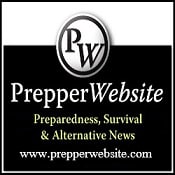This article explains some methods for effective communication using radios, phones and other devices.
Call Sign
Everyone in your family or group should have a call sign, even children. Call signs should not be reflective of any characteristics or provide any clue as to the identity of the person. Do not use your real names on any communication device, during an emergency. This can compromise both the caller and the receiver’s operational security, OPSEC.
Note: Call signs for U.S. Presidents and their families begin with the same letter – see example below.
Example
|
Name |
Call Sign |
|
Ronald Reagan |
Rawhide |
|
Nancy Reagan |
Rainbow |
|
Maureen Reagan |
Rhyme |
|
Michael Reagan |
Riddler |
This technique should be used regardless of the communication devise, e.g., phone, voice mail, instant messaging or radio.
Response codes can be used to communicate the situation status. If someone is holding a knife to your throat, you can communicate that you are under duress using response codes without the assailant knowing.
Example
|
Name |
Call Sign |
Normal Response |
Duress Response |
|
Ronald Reagan |
Rawhide |
LED |
Hominy |
|
Nancy Reagan |
Rainbow |
Hyperlink |
Pot holder |
|
Maureen Reagan |
Rhyme |
Carrot |
Piñata |
|
Michael Reagan |
Riddler |
Bowling |
Ace |
Example
|
Caller |
Receiver |
Transmission |
|
Rawhide |
Rainbow |
What is your situation? |
|
Rainbow |
Rawhide |
Situation is hyperlink, What is yours? |
|
Rawhide |
Rainbow |
Situation is Hominy |
In this transmission, both the caller and receiver have confirmed their identity to each other and provided their circumstances. Rainbow is normal and Rawhide is under duress.
Encrypt Status
Status can be discretely provided on each member of the family or group without revealing their real names. Each person can have two codes to describe their circumstance. This serves as a confirmation the identities of the caller and receiver to each other. One family has established some phrases to discreetly communicate their situation.
Encrypt Locations
Locations need to be codified during communication transmissions, also. Define code names for each relevant location. Begin with your three shelters and work location
|
Contact |
Location |
Location Code Name |
|
Rawhide |
Primary shelter/residence |
Rock slide |
|
Rawhide |
Primary work |
Slippery Elm |
|
Rawhide |
Secondary shelter |
Shirt pocket |
|
Rawhide |
Tertiary shelter |
Crayola factory |
|
Rawhide |
Rally point Alpha |
Bone yard |
|
Rawhide |
Rally point Bravo |
Ricochet |
If you need to provide latitude and longitude coordinates, develop a method of disguising the numbers. A primitive technique is to select a key. This is a number that will be added by the person who is encoding the latitude. To encode the latitude, add the key. The receiver must know the key to decode the latitude.
The receiver (of the encoded numbers) must know the key to decode the phone number
|
Contact |
Location |
Location Code Name |
GPS Coordinates |
|
Rawhide |
Primary shelter/residence |
Rock slide |
33.6534 N 84.4494 W |
|
Rawhide |
Primary work |
Slippery Elm |
33.7490 N 84.3880 W |
|
Rawhide |
Secondary shelter |
Shirt pocket |
33.4926 N 82.0471 W |
|
Rawhide |
Tertiary shelter |
Crayola factory |
33.4487 N 84.4549 W |
|
Rawhide |
Rally point Alpha |
Bone yard |
33.6221 N 84.3691 W |
|
Rawhide |
Rally point Bravo |
Ricochet |
33.5973 N 84.4399 W |
The encrypted coordinates are listed below.
|
Contact |
Location |
Location Code Name |
GPS Coordinates (encrypted) |
|
Rawhide |
Primary shelter/residence |
Rock slide |
33.6534 N 84.4498 W |
|
Rawhide |
Primary work |
Slippery Elm |
33.7490 N 84.3884 W |
|
Rawhide |
Secondary shelter |
Shirt pocket |
33.4926 N 82.0475 W |
|
Rawhide |
Tertiary shelter |
Crayola factory |
33.4487 N 84.4553 W |
|
Rawhide |
Rally point Alpha |
Bone yard |
33.6221 N 84.3695 W |
|
Rawhide |
Rally point Bravo |
Ricochet |
33.5973 N 84.4403 W |
Encrypting location coordinates, it may be beneficial to add the key to the first (leftmost) digit. Adding the key to the end would place the coordinates close to actual location. Adding the key to the first digit would make it a location farther away from the actual location.
The above examples are simple and may not be appropriate for all number encoding conditions. To increase the level of encryption, you can use a calculation for the key. Using a calculation for the key would make the encryption more complicated and more difficult to decipher.
Prowords
To reduce the transmission duration radio operators use prowords to convey a message. They are language short-cuts used in radio transmissions.
They can also be used to obscure the meaning of the transmission to eavesdropper. Prowords can be used to communicate a meaning that is only known to certain other radio operators. Emergency responders can use prowords to communicate to other emergency responders. If an emergency responder is at an accident site and needs to report the condition of the victims, they may use a proword to inform their incident commander of a deceased victim.
Locations are good candidates for prowords. There are situations when you do not want to transmit a location over a communication device. That information could be used by someone with malicious intent.
Standard Prowords
Some prowords are defined for each specific situation and some have been standardized. Below is a sample of common standard prowords.
|
Proword |
Description |
|
Affirmative |
Yes |
|
Copy |
The received is indicating that they have received and understanding the sender’s transmission. Do not say “Copy that.” Just say “Copy.” |
|
How copy |
What is the quality of the sender’s transmission? |
|
I say again |
The sender is going to repeat the previous transmission. They don’t say, “I repeat.” Repeat in the military means fire (artillery) again. |
|
Out |
The initiator of the transmission is indicating the end of the conversation. |
|
Over |
When a sender completes a transmission, they say “Over” to indicate that are finished and listening for a response. Never say “Over and Out.” The sender either says “Over” or they say “Out” – but not both (together). |
|
Roger |
The received is indicating that they have received and understanding the sender’s transmission. Do not say “Roger that.” Just say “Roger.” |
|
RTB |
Returning to base or returned to base |
|
Say again |
The receiver is requesting the sender to repeat their most recent transmission. Avoid saying “repeat” in a transmission. That is a proword for the Army infantry. It mean to fire artillery again. If you need to say something again, say, “I say again…” Do not say “I repeat…” |
|
Wilco |
The receiver is indicating that they have received, understand and will comply with the sender’s instructions. This is not used with Roger. Never say, “Roger” and “Wilco” together |
Situationally-Defined Prowords
Using standardized prowords are good to reduce the amount of transmission traffic, but since they are standardized, their meaning is (intentionally) common knowledge. Some situations may require OPSEC. In a sensitive situation, prowords are created and only shared with appropriate people. Below are some examples of situationally-defined prowords.
|
Proword |
Description |
|
Clean-up on aisle seven |
Call an ambulance |
|
Big Stick |
Local law enforcement, example: “Call Big Stick” |
|
Talley Ho |
The lost item has been found – could be a lost person |
 |
By Roger Eaton Over thirty years of experience in information technology and over seventeen years of experience in emergency services converged to inspire Eaton to develop Prep Smartz, emergency management software and Prep Smartz Academy. |


